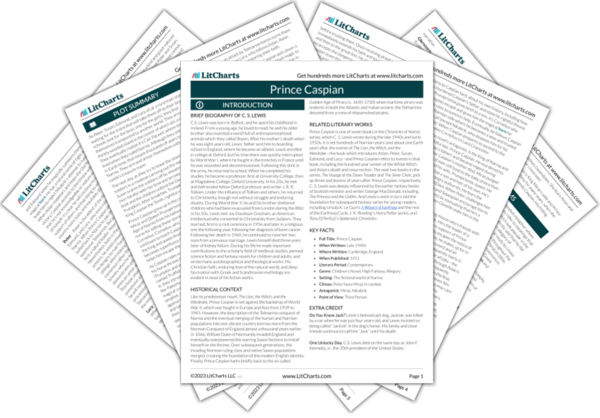Doctor Cornelius exposes the extent to which the evil Telmarine forces have reshaped Narnia when he surveys the variety of life that once flourished there and no longer exists—at least in the open. Miraz’s wish to cover up this violent history lies in his fear of the powers these creatures have (which humans lack) rather than in a sense of shame. Caspian, in contrast, feels the shame of his ancestors’ deeds deeply and wishes to right their wrongs. The fact that some Telmarines feel the same way illustrates just how much Miraz abuses even his own people, and it also points to the power of enduring faith—even though no one alive has seen the Old Narnia or Aslan, their faith will become an integral part of restoring it. And Cornelius’s mixed heritage anticipates a new Narnian Golden Age of cooperation and friendship between humans and magical creatures.


